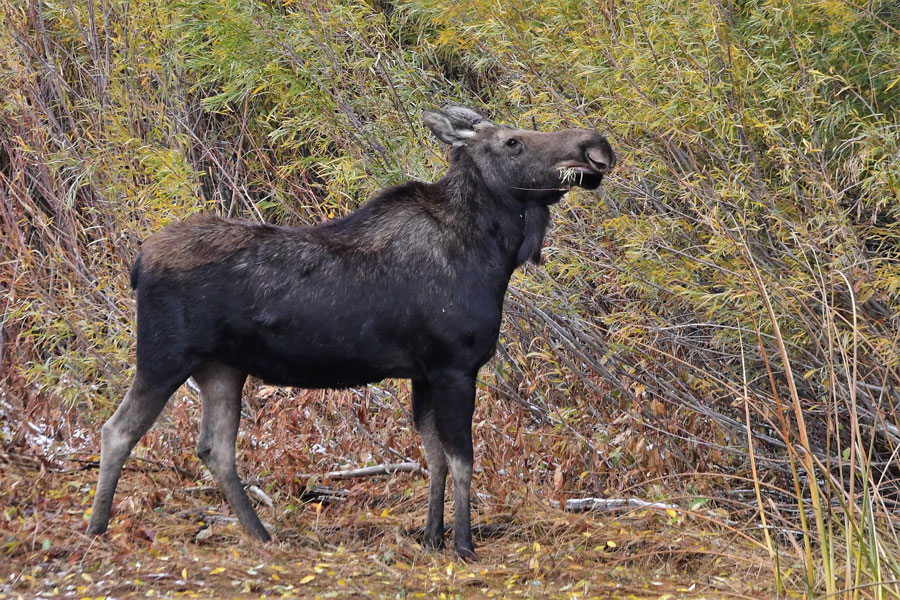Watching sandhill cranes in the snow
Published at
Waking up to six inches of snow in Rexburg on Monday sent me high-tailing it toward Camas National Wildlife Refuge, looking to see how the white stuff had affected the sandhill cranes. The first of the long-legged birds I saw was about 500 under a pivot irrigation line south of Hamer along 1900 North. They were mixed with Canada honkers almost a quarter of a mile away, but small flocks kept dropping in to join them.
After watching them for about 45 minutes, a flock of about 100 of them took off, circled seven times, climbing altitude in a cork-screw pattern. I thought they would get above the low hanging clouds and catch the stiff north wind; but no, it was not time to head south. Fighting the wind, they headed north toward the refuge and I did the same thing.

As I approached the refuge, I saw small flocks of from two to about 15 birds in the farmer’s fields and pastures. On the refuge agriculture fields where mixed grains along with sunflowers had been planted and left standing for migrating birds to feed on, there were several hundred. More cranes along with Canada geese and mixed flocks of ducks kept dropping in. A mixed flock of Red-winged blackbirds, Dark-eyed juncos and a few other songbirds that had been caught by the snow was also feeding with the cranes and waterfowl.
As the low clouds began to lift and the birds began moving from the ponds and then back to the fields to eat, beautiful scenic scenes were created with the birds outlined against the stark white mountain backgrounds. I spent several hours watching the different flocks move around as I followed them around the auto-route through the refuge.
I was the only vehicle in the refuge and in one of my loops through the marsh, I happened across a cow moose, all by herself, stripping the still green leaves of the willows to feed on. She won’t be alone long as some bull will get a whiff of her and will come to fill out his dance card.

As I was leaving the refuge in the midafternoon, I watched as a flock of about 50 sandhills climbed so high that I could hear them better than see them. With a still stiff north wind blowing, they caught the tailwind and headed south. They may have just moved to Market Lake or the Gray’s Lake area or they may have gone to their wintering grounds in New Mexico or California.
By Thursday afternoon, most of the cranes are still in southeastern Idaho, and if the predicted warm weather shows up, they should stay for about two more weeks. They usually stay until large flocks of snow geese or Tundra swans migrate through before they leave for the winter.
Unlike their spring migrations, the Tundra swans and snow geese do not stage in this area on their way south. It is a one-night stay or just a fly-over as they are in a hurry to get to the warm sunny southern states while many of the Trumpeter swans will winter in the Upper Snake River Valley.

In recent autumns, the Idaho Department of Fish and Game has had a hunting season for them to help “eliminate some of the damage they cause crops.” These September hunts were on a “first-come, first serve” basis with a maximum limit of two birds per hunter. With a limited number of tags for these big birds, the hunts did not seem to have an impact on the general population.
Good areas to see the gathering of the cranes are the Grays Lake area, Camas NWR, Teton Valley, and the Market Lake area. If you want to see them gather, check out these areas soon as a bitter cold night will convince them to leave in a hurry. I love to watch them soar to a high altitude until I cannot see them anymore and then listen to them as they head for warmer areas to winter. By Halloween most of them should be gone.


Living the Wild Life is brought to you by The Healing Sanctuary.


